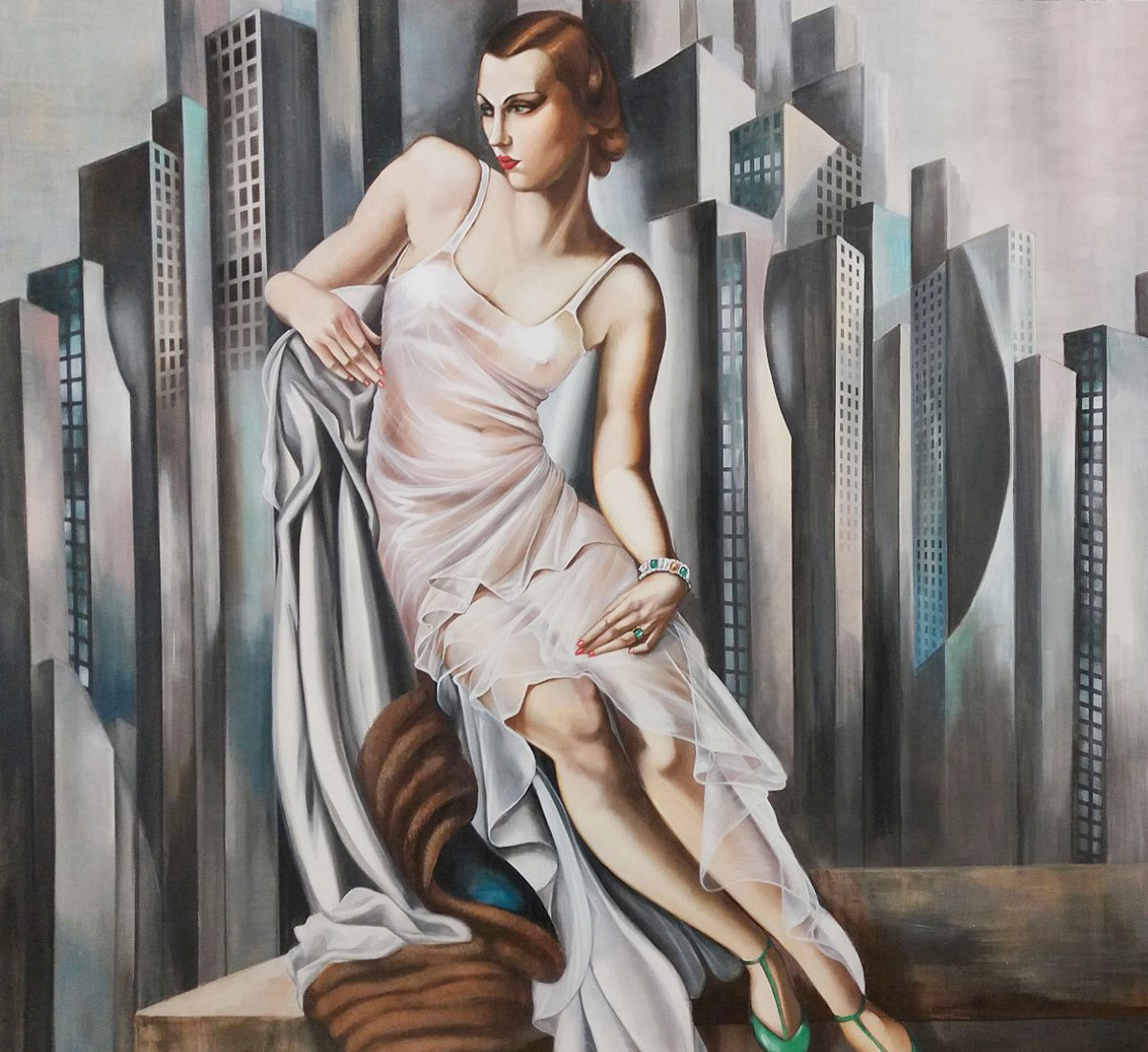Often the scientists drawn to fractal geometry felt emotional parallels between their new mathematical aesthetic and changes in the arts in the second half of the century. They felt that they were drawing some inner enthusiasm from the culture at large. To Mandelbrot the epitome of the Euclidean sensibility outside mathematics was the architecture of the Bauhaus. It might just as well have been the style of painting of Josef Albers: spare, orderly, linear, reductionist, geometrical. Geometrical--the word means what it has meant for thousands of years. Buildings that are called geometrical are composed of simple shapes, straight lines and circles, describable with just a few numbers. The vogue for geometrical architecture and painting came and went. Architects no longer care to build blockish skyscrapers like the Seagrams Building in New York, once much hailed and copied. To Mandelbrot and his followers the reason is clear. Simple shapes are inhuman. They fail to resonate with the way nature organizes itself or with the way human perception sees the world. In the words of Gert Eilenberger, a German physicist who took up nonlinear science after specializing in superconductivity: "Why is it that the silhouette of a storm-bent leafless tree against an evening sky in winter is perceived as beautiful, but the corresponding silhouette of any multi-purpose university building is not, in spite of all efforts of the architect? The answer seems to me, even if somewhat speculative, to follow from the new insights into dynamical systems. Our feeling for beauty is inspired by the harmonious arrangement of order and disorder as it occurs in natural objects--in clouds, trees, mountain ranges, or snow crystals. The shapes of all these are dynamical processes jelled into physical forms, and particular combinations of order and disorder are typical for them.
Gleick, James, Chaos, making a new science, Penguin, NY, 2008, pg. 116-117.
 publicdelivery.org
publicdelivery.org
Joseph Albers art

A tree
There remain on earth many people whose culture doesn't include rectilinear sights. At one time everywhere there were no corners, no right angles. Only during the industrial revolution when mechanized manufacturing displaced hand-built items did the 90 degree angle become common place, indeed dominant.
In art, an artist centered at the intersection of geometry and nature was Tamara de Lempicka, whose portraits often included very human, non-geometrical forms against a cubist background.
 neverwasmag.com
neverwasmag.com
No comments:
Post a Comment